
Queen Anne High School, a Beaux Arts-style structure with a commanding view of Seattle at Second Avenue North and Galer Street, opened in 1909, attracting students from Queen Anne Hill and the Magnolia Bluff. Enrollment peaked at more than 2,600 in the mid-1960s, but plummeted to fewer than 1,000 by 1980. A year later, in 1981, the Seattle School Board wielded the axe and Queen Anne High graduated its last class.
In 72 years, more than 23,000 students graduated from Queen Anne High. The building, ultimately registered as a Historic Landmark, was renovated and reopened in 1986 as a swank apartment/condominium complex.
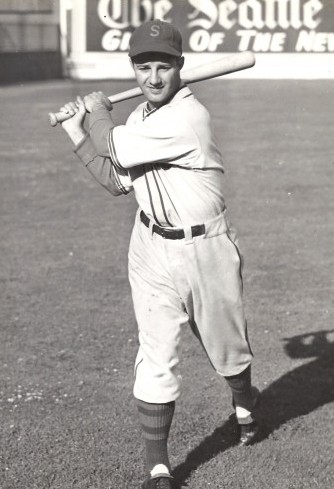
In its series of periodic looks at Seattle-area high schools, Wayback Machine is attempting to identify the most significant athletic figure in Queen Anne’s storied history. As with previous Wayback Machines on Franklin, Garfield and Roosevelt high schools, the individual might be an athlete, coach, administrator or sports journalist. The only qualifier: The school must boast at least a half a dozen distinguished sports graduates among its population of outstanding alums.
During its educational life span, Queen Anne dispatched an amazing array of same into the world, including physicist Howard E. Brandt, reporter/anchor Kathy Goertzen (KOMO), microcomputer software pioneer Gary Kildall, Church of Scientology founder L. Ron Hubbard, social scientist Arthur Brooks, and former Washington legislator and internet business entrepreneur Jessie Wineberry, among others.
Rudolph F. Zallinger, Pulitzer Price-winning artist from Yale University’s Peabody Museum and a boyhood playmate of Seattle baseball icon Edo Vanni, also graduated from Queen Anne.
Perhaps no Queen Anne alum developed a larger following that Henry “Hank” Ketcham, Class of 1937, another Vanni chum. After graduating from Queen Anne, Ketcham enrolled in and dropped out of the University of Washington, and then moved to Los Angeles, where he hoped to work as an illustrator and animator for Walt Disney.
Ketcham ultimately worked for Walt Disney Studios on American classics Pinocchio, Fantasia and Bambi, and also found employment with Walter Lantz Productions, which created Woody Woodpecker. In 1951, Ketcham introduced his most famous character, Dennis The Menace, based on his own four-year-old son, Dennis Ketcham.
By the time of Ketcham’s death in 2001, King Features Syndicate distributed Dennis The Menace to more than 1,000 newspapers in 48 countries in 19 languages.
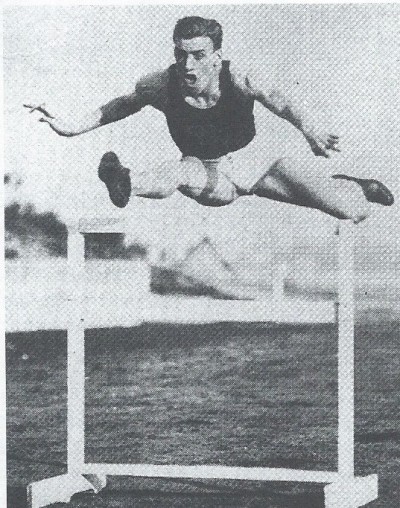
Queen Anne’s rich sports tradition dates to the 1920s, when Grizzly teams began to feature athletes who would later star at the University of Washington, and beyond. This list includes basketball/track star Steve Anderson, eventually an Olympic medalist; James Bryan, prominent in football for the Huskies, and “Cowboy” Johnny Cherberg, who later coached the Huskies and had a long run as Washington state’s lieutenant governor.
Listed alphabetically, the following are the most decorated Queen Anne alums whose careers were largely, if not entirely, sports-based. At the end of this Wayback Machine, we’d like you to submit your choice for the most prominent and then leave a comment explaining your reasoning.
Steve Anderson (Basketball, Track): A native of Portsmouth, OH., Anderson and his family relocated to Seattle when he was a child. At Queen Anne, Anderson received more fame as an All-City basketball player than he did as a member of the school’s track team, but the athletic perception of him changed after he enrolled at the University of Washington and came under the influence of Clarence S. “Hec” Edmundson, the school’s basketball and track coach.
During his UW career, Anderson matched the world record of 14.4 seconds four times in the 120-yard high hurdles, the last in 1930 when he won his third consecutive AAU national championship.
Anderson looked like the likely winner of the 110-meter hurdles at the 1928 Olympic Games in Amsterdam, but was nipped at the tape by South Africa’s Sid Atkinson, settling for the silver medal. Anderson’s time (14.8), and Atkinson’s, established an Olympic record.
Anderson became a charter member of the Husky Hall of Fame in 1979.

James Bryan (Football, Basketball, Track): Bryan, who starred in three sports at Queen Anne and made All-City in two (football, basketball), had a notable athletic career in the early 1920s at the University of Washington. As a 178-pound lineman under head coaches Stub Allison and Enoch Bagshaw, he lettered in 1920, 1922 and 1923 and played in the 1924 Rose Bowl against Navy, scoring the game-tying TD on a guard-eligible pass from quarterback Fred Abel.
An All-Coast guard and second-team All-America, Bryan became the first Husky to represent UW in the East-West Shrine Game (1925).
Bryan also played guard for Hec Edmundon’s basketball teams, lettering in 1921, 1922 and 1923. He was selected first-team All-Pacific Coast Conference following the 1922 season.
Bryan won two letters in track (participated in weight events), his total of eight a University of Washington record at the time.
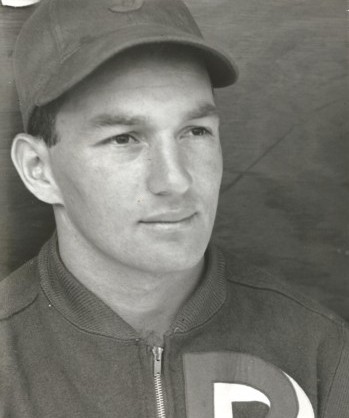
After leaving the university, Bryan earned a law degree and practiced in Bremerton, served as Kitsap County prosecutor and Kitsap County Public Utilities Commissioner.
Mike Budnick (Baseball): A native of Astoria, OR., Budnick grew up in Seattle, pitched for Queen Anne High at the same time Fred Hutchinson threw for Franklin (mid-to-late 1930s), and began his professional baseball career shortly after leaving Queen Anne with Twin Falls of the Class C Pioneer League.
Budnick had an eight-year minor league run that included two cups of coffee with the Seattle Rainiers (1942, 1950) of the Pacific Coast League.
Between those stints, Budnick pitched for the 1946-47 New York Giants, and had his best season in 1946 when he made 35 appearances. A right hander, Budnick started seven times, had a 2-3 record and a 3.16 ERA with three saves. He hit his only career home run off Al Jurisch of Philadelphia July 6 at the Polo Grounds.
Johnny Cherberg (Football): A native of Pensacola, FL., Cherberg played football at the University of Washington after his Queen Anne days and then became a successful coach at Cleveland (1933-37) and Queen Anne (1938-45) high schools, leading both to state championships.
That led to Cherberg joining the UW’s football coaching staff, and in 1953 he succeeded Howie Odell as head coach. Cherberg did not have a successful stint, producing a 10-18-2 record over three seasons. Cherberg ultimately lost his job in the wake of a slush fund scandal that landed Washington on NCAA probation for two years.
Cherberg didn’t stay down long. In 1957, he was inaugurated as Washington’s lieutenant governor, serving under Albert Rosellini. He held that position continuously under Republican Gov. Daniel J. Evans (1965–77), Democrat Dixy Lee Ray (1977–81), Republican John D. Spellman (1981–85) and for the first term of Democrat Booth Gardner (1985–89). In his last race, Cherberg won 63 percent of the vote.
Cherberg entered the Husky Hall of Fame in 1981.
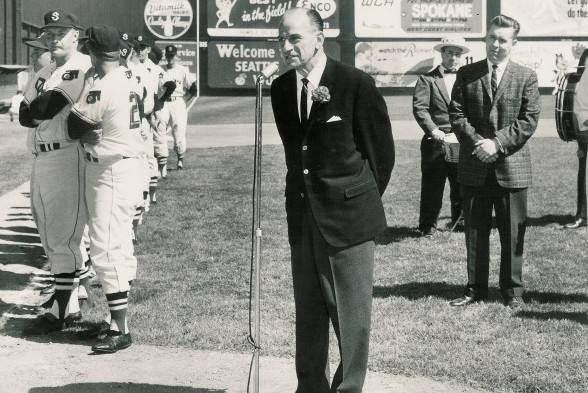
Ray Daughters (Swimming Coach): After graduating from Queen Anne, Daughters hired on as a swimming instructor at Seattle’s Crystal Pool, where he worked for nearly a decade before moving to the new Washington Athletic Club in 1931. There, Daughters trained his first Olympian, Helene Madison, who went on to win three gold medals at the 1932 Summer Games in Los Angeles.
Four years later, Daughters coached University of Washington swimmer Jack Medica to a three-medal performance (one gold, two silver) at the 1936 Berlin Olympics. His other Olympic swimmers included Marylou Petty, Olive McKean and Nancy Ramey, the latter a silver butterfly medalist at Melbourne in 1956.
Daughters coached U.S. women at the 1936 Games in Berlin and at the 1948 Games in London. His Washington Athletic Club swimmers set 30 world and 301 American records and won 64 national championships.
Daughters entered the International Swimming Hall of Fame in 1971.

William Dwyer (Baseball): A 1946 Queen Anne graduate, Dwyer never distinguished himself on a baseball diamond, or in any other athletic endeavor, but as a prominent Seattle attorney had a profound impact on baseball in the Pacific Northwest.
The son of a stenographer and truck driver, Dwyer grew up on Queen Anne Hill and worked his way through high school, the University of Washington and New York University law school performing all sorts of odd jobs, including copy boy at The Seattle Post-Intelligencer, cab driver, dishwasher and waiter.
As a trial lawyer, Dwyer argued hundreds of case, none as significant in terms of its relationship to sports as the one he filed on behalf of the citizens of Washington in the fall of 1970 against the American League over its sudden removal of the Seattle Pilots following the 1969 season. In the suit, Dwyer alleged breach of contract, fraud and antitrust violations (even though baseball was exempt from prosecution under antitrust law).
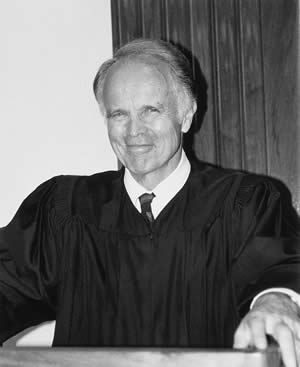
The case didn’t reach trial until January, 1976, when Dwyer squared off against American League officials in the Snohomish County Courthouse in Everett. Dwyer sought a major league team to replace the Pilots, plus more than $7 million in damages to compensate Seattle and its taxpayers for having lost them.
Dwyer presented such a compelling case that he forced the American League to settle the suit, the final agreement calling for the league to award Seattle an expansion franchise, which became the Mariners.
Bob Galer (Basketball, Baseball): The youngest of three sons of a fire department captain, Galer learned to play a variety of sports on the Warren Avenue Playfield near Queen Anne High and, by age nine, was winning awards at the Seattle Times-Park Board Old Woodenface Contest.
At Queen Anne, Galer lost no time getting on All-City basketball teams and making a name for himself in football, baseball, tennis and track.
At the University of Washington, Galer made Helms Foundation All-America basketball teams in 1934 and 1935, earned the second Edmundson Inspirational Award, won letters in track and field and graduated with a degree in commercial engineering.
Galer financed his education by pulling night duty in the UW bookstore.
Galer later joined the U.S. Marine Corps and in March 1943 received the Medal of Honor, presented at the White House by President Franklin D. Roosevelt, for heroism during World War II. During his military career, Galer also received two Distinguished Flying Crosses and the Legion of Merit. He retired as a brigadier general in 1957.
He became a member of the State of Washington Sports Hall of Fame in 1979 and the Husky Hall of Fame in 1981.

Bob Houbregs (Basketball, Baseball): After starring for Queen Anne in the late 1940s, there was never any question that Houbregs would attend the University of Washington. Playing under Tippy Dye, Houbregs developed into an All-America and led the Huskies to their first (and only) Final Four appearance in 1953, after which he was named the NCAA Player of the Year.
Although he has been gone from UW for more than 50 years, Houbregs still holds a number of school scoring records, including the top three places for most points in a game, 49 vs. Idaho Jan. 10, 1953, 45 vs. Seattle U., March 13, 1953, and 42 vs. Louisiana State March 18, 1953.
Also a first baseman during his years at Queen Anne, Houbregs played six years of professional basketball with the Milwaukee Hawks, Baltimore Bullets and Fort Wayne Pistons, ending his career due to a knee injury.

Houbregs entered the Naismith Basketball Hall of Fame in 1987. He is also a member of the State of Washington Sports Hall of Fame and Husky Hall of Fame.
Don Sprinkle (Football): Sprinkle played fullback for the Grizzlies from 1931-34 well enough that he received a scholarship to the University of Oregon. After dropping out to earn family income during the Great Depression, Sprinkle eventually enrolled at the University of Puget Sound.
After starring at UPS, Sprinkle went to work for the Seattle Gas Co. and played semi-pro ball for the Renton Rams of the Northwest League. In 1940, Sprinkle went to work as a volunteer football coach at Queen Anne and eventually found full-time work with the Seattle Police Dept.
Sprinkle had a lengthy career as a youth football coach – his Queen Anne Boys Club team won three championships in the 1940s – and eventually became coach of the semi-pro Seattle Ramblers. Under his watch, the Ramblers had four undefeated seasons and won four championships.
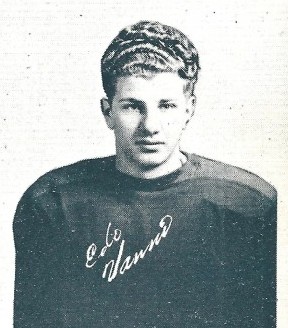
In 1952, the Puget Sound Sportswriters and Sportscasters Association named Sprinkle its Charles E. Sullivan award winner, an accolade presented annually to recognize distinguished service to Northwest athletics.
Bob Stagg (Baseball): Stagg died in May, 2008, at age 89, the last living member of the 1939-41 Seattle Rainiers who won three consecutive Pacific Coast League championships. Stagg was a Queen Anne teammate of Edo Vanni’s, along with two other future Rainiers, Mike Budnick and Joe McNamee.
Stagg played reserve catcher on Rainiers teams of 1939-42. After serving in the Navy in World War II — he also was on active duty in the Korean War, and was in the Naval Reserves for 27 years — he returned to the Rainiers in 1946-47. He had a .221 average during his PCL career.
Stagg also played for Twin Falls in the Pioneer League, and Spokane and Tacoma in the Western International League, both feeder leagues for the PCL.
Edo Vanni (Baseball): Queen Anne graduated a host of baseball players in the 1930s that went on to professional careers, none as prominent as Vanni, who would have made All-City all four years of his enrollment had he not suffered a broken leg during a preseason practice during his junior year.
After starring for the Grizzlies, Vanni became an outfielder on the University of Washington baseball team and a place kicker on the football team, ultimately renouncing his scholarship in order to sign with the Seattle Rainiers, who had just been purchased by Rainiers Brewery owner Emil Sick.
That began an association with professional baseball that lasted the rest of Vanni’s life. He ultimately was employed (in various capacities) by every franchise except the Seattle Mariners.
He was a rookie right fielder for the first Rainiers team in 1938 and managed the final one in 1964. He also served as general manager for the Seattle Angels, a AAA franchise that operated from 1965 to 1968. When the major leagues finally came to Seattle in 1969, Vanni was installed as director of group ticket sales and special events for the Pilots.
Vanni’s baseball résumé also included playing or managing stints, or both, in Spokane, Tri-Cities, Vancouver, Victoria, Wenatchee and Yakima, and one year away from the Northwest, in Birmingham, AL.
“He was 100 percent baseball,” said Earl Averill Jr., a former big leaguer and son of the Snohomish Hall of Famer by the same name.
A feisty player (and manager) who frequently found himself in the thick of brawls, Vanni died in 2007 at age 89.
“He could start a fight in an empty room,” his wife, Margaret, said.

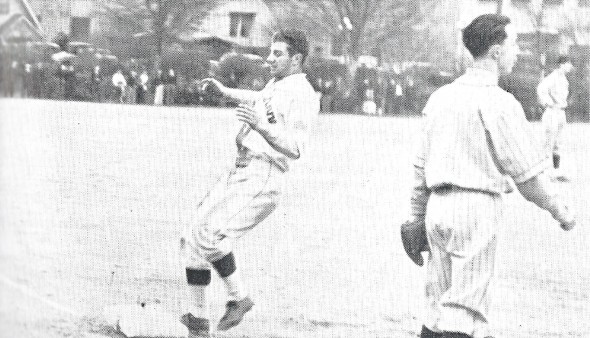
[polldaddy poll=7628745]
————————————
Many of the historic images published on Sportspress Northwest are provided by resident Northwest sports history aficionado David Eskenazi. Check out David’s Wayback Machine Archive. David can be reached at (206) 441-1900, or at seattlesportshistory@gmail.com

1 Comment
Glad you’re doing this for the defunct schools, too, Dave. Great job as always Hope that means we’ll eventually see Lincoln and Broadway, although I’m not sure you’d have enough people to qualify Broadway for these reviews. Between Helene Madison, Sammy White and Don Coryell, though, you have a solid base to begin from for Lincoln’s review.
BTW, didn’t Edo Vanni eventually live in one of those converted condos at QA? Once a Quay, always a Quay, I suppose.